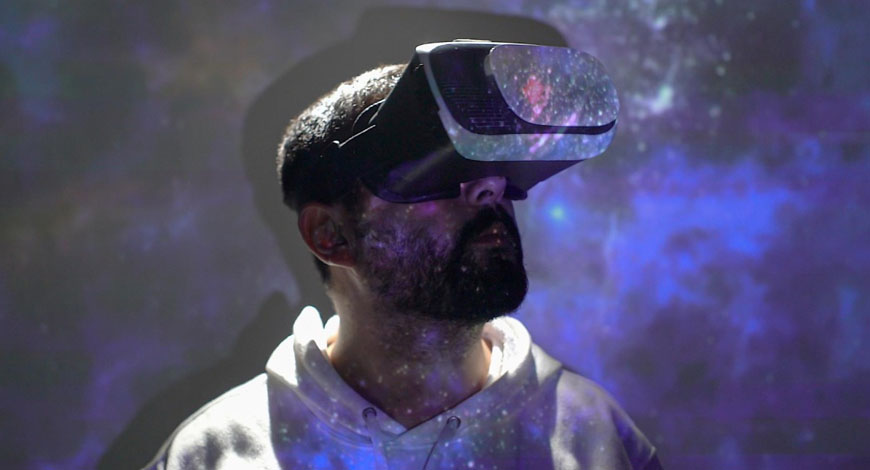Metaverse market projected to reach $1,303.4 billion by 2030

The global Metaverse Market size is expected to grow from USD 83.9 Billion in 2023 to USD 1,303.4 Billion by 2030 at a CAGR of 48.0% during the forecast period, according to Markets and Markets™.
Metaverse is an online experience of shared 3D virtual worlds created by combining physical and digital worlds. These virtual worlds are created by leveraging AR, VR, real-time 3D, and interactive video. The Metaverse has gained wide popularity in social networking, online video gaming, and live entertainment. With investments towering up for real-time 3D technology development, the market players from the social media industry, online gaming market space, and other technology fields are already foreseeing a vast potential in the metaverse market. Online game makers, such as Activision Blizzard (US), Electronic Arts (US), Microsoft (US), NetEase (China), Nexon (Japan), Roblox (US), Take-Two (US), and Tencent (China), support the metaverse market growth through the in-game 3D virtual worlds. The opportunities in adjacent markets, such as VR, AR, extended reality, cloud gaming, AI in social media, and AR/VR hardware and peripherals, open new revenue prospects for the metaverse market.
The software segment holds the largest market size during the forecast period. The software includes gaming engines, 3D modeling & reconstruction tools, volumetric video tools, geospatial mapping software, metaverse platforms, and financial platforms. A game engine is a software framework or platform that developers use to create and develop video games. It provides a set of tools, libraries, and systems for various aspects of game development, such as rendering graphics, handling physics, managing game assets, and implementing gameplay logic. Game engines help streamline the game development process and enable developers to focus on creating the actual content and gameplay rather than building the underlying technology from scratch.
Game engines play a significant role in the development of the metaverse, which is a virtual, interconnected, and immersive digital universe where users can interact, socialize, work, and play. The few usage of game engine in metaverse are, creating virtual worlds, increasing user interaction, avatar creation and animation, multiplayer networking and many more. In 2023, the software segment held the highest share in the metaverse market during the forecast period as it helps to o create and design the virtual worlds and environments within the metaverse. This includes 3D modeling software, world-building tools, and terrain generation software, it enable users to navigate, interact, and control their experience within the metaverse. This includes menus, HUDs (Heads-Up Displays), and gesture recognition interfaces, it helps to implement networking protocols and multiplayer functionality to enable users to interact with each other in real-time within the metaverse. This would support market growth in the coming years.
The geographic analysis of the metaverse market includes five regions: North America, Asia Pacific, Europe, Middle East & Africa, and Latin America. As a technology adopter, North America holds the largest market size during the forecast period. Being technologically advanced and developed, North America is the leading market in developing cutting-edge display technology. Further, the rising expenditure of companies and individuals on digital solutions and advanced technologies also boosts market growth. North America has emerged as the largest market for metaverse technology. It accounted for a significant share of the global market in 2023. The use of AR technology in consumer electronics propels the growth of the AR market in the region. Industries such as aerospace and defense, healthcare, consumer, and commercial applications for education and training also use AR. Several global companies providing AR devices and solutions have their presence in the US, including Microsoft, Apple, Meta, and Google. Additionally, enterprises’ increased acceptance of metaverse technologies to market their products in a modern way has been the key factor driving the growth of the metaverse market in North America.
VR and AR technologies are crucial for creating immersive metaverse experiences. VR provides fully immersive digital environments, while AR overlays digital content onto the real world, blending the physical and digital realms. Advances in hardware have made VR and AR more accessible and compelling; this includes better headsets, more powerful GPUs, and more affordable components, making the technology available to a broader range of consumers and industries. The availability of engaging content boosts AR and VR growth. As more developers and creators produce high-quality VR and AR experiences, it encourages user adoption. This content spans from games and entertainment to educational and professional applications. The gaming industry has been a significant driver for VR adoption. Games like “Beat Saber,” “Half-Life: Alyx,” and “Superhot VR” have demonstrated the potential for immersive gaming experiences.
Additionally, businesses use AR for interactive marketing campaigns and location-based entertainment, like the success of Pokémon GO. MR is finding significant traction in the enterprise and industrial sectors. Businesses are adopting MR for remote assistance, training, maintenance and repair, 3D modeling, and data visualization; MR helps improve efficiency, reduce errors, and enhance collaboration in these industries. Markets and Markets
Source link
#Metaverse #market #size #expected #grow #USD #billion





